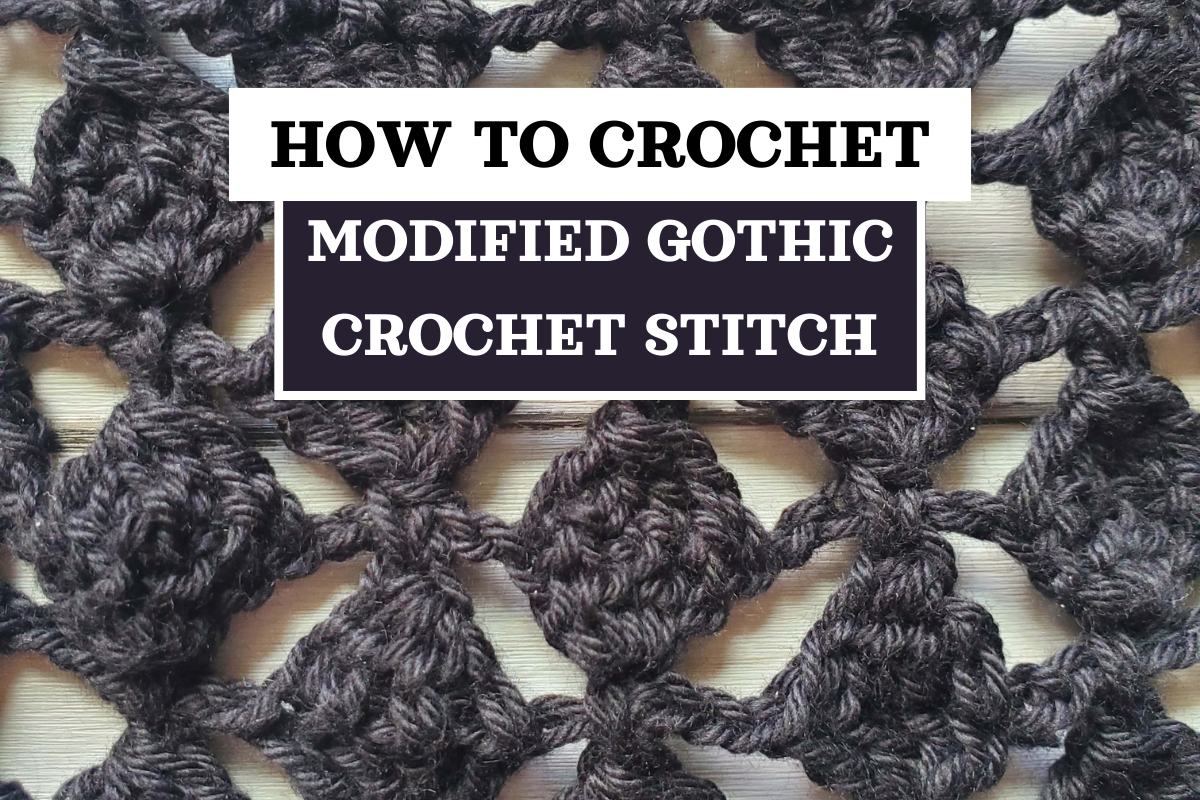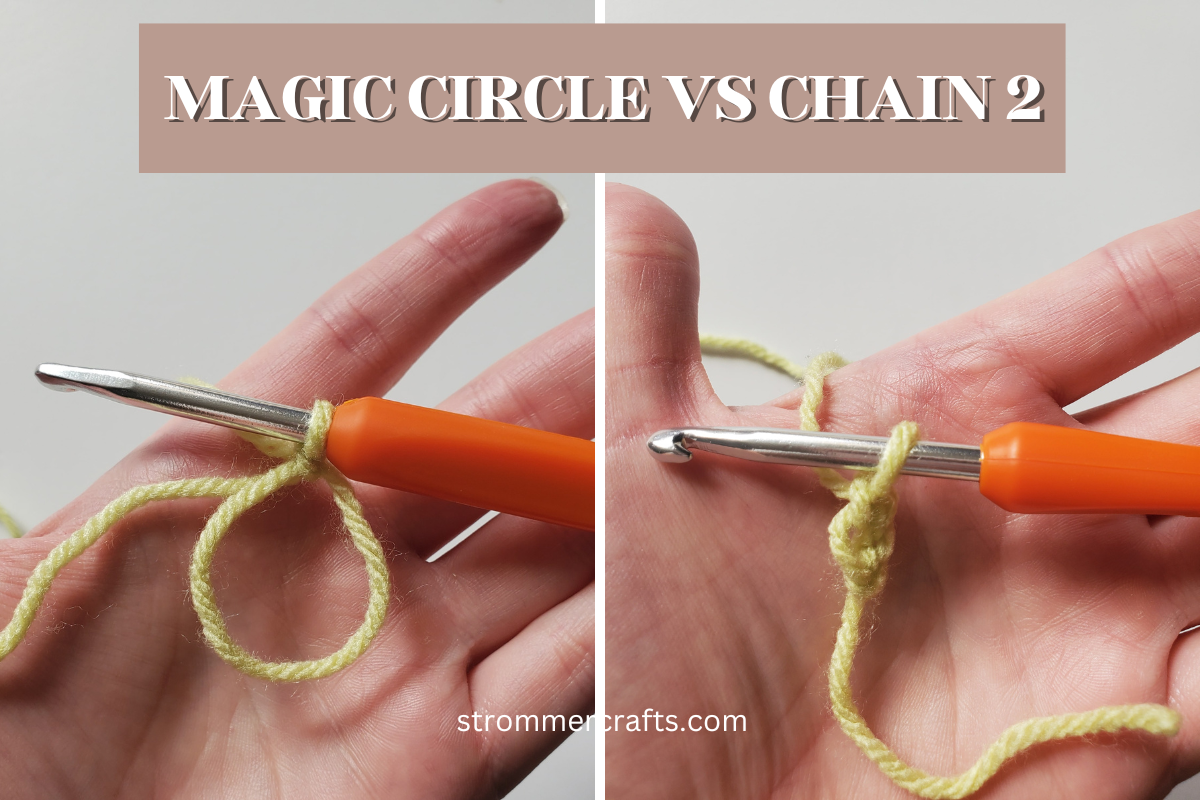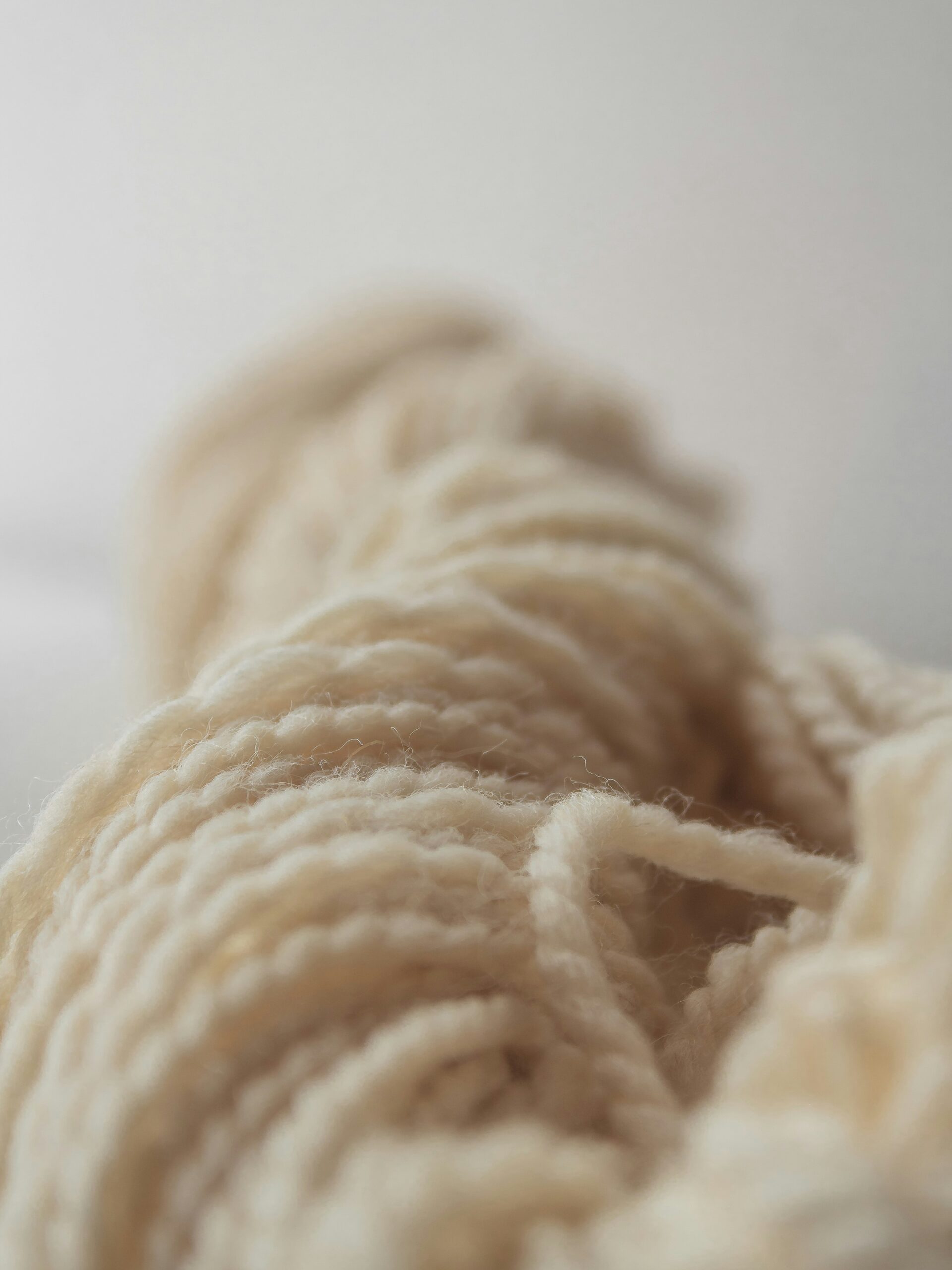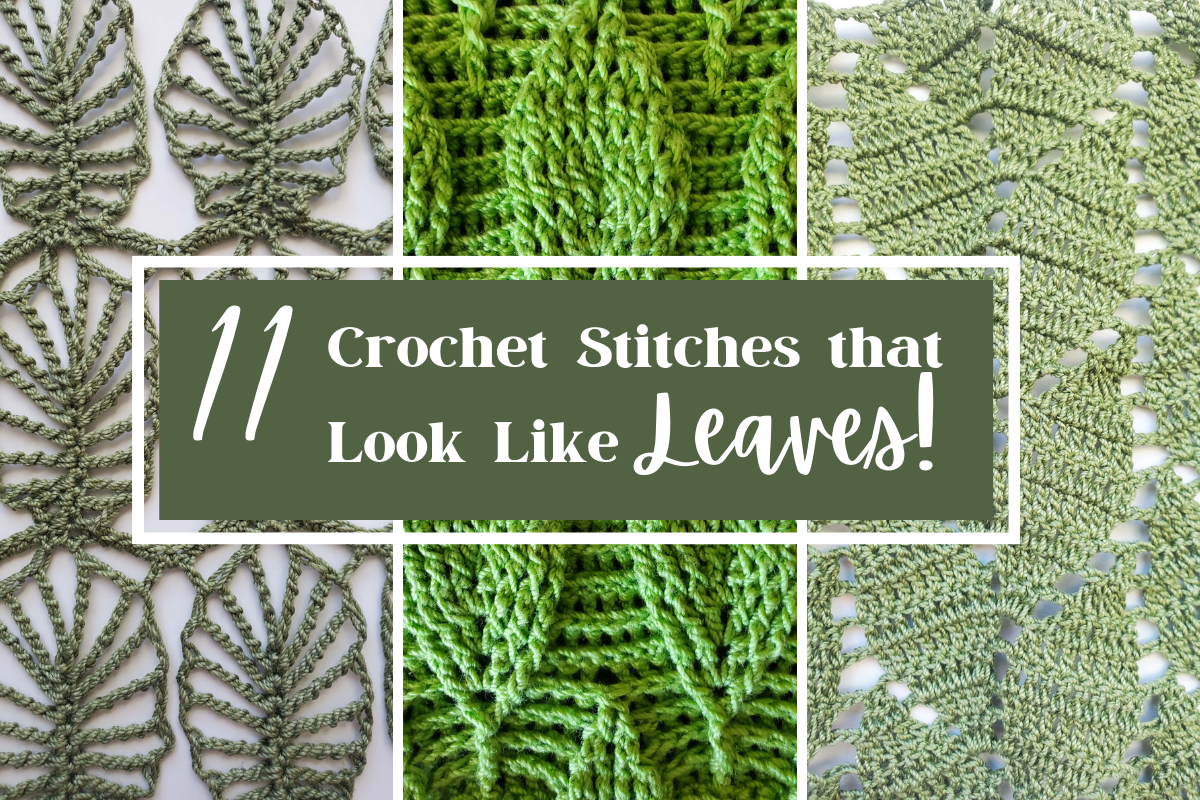How to Crochet the Modified Gothic Crochet Stitch
Hey everyone, today I’m sharing how to crochet the Modified Gothic Crochet Stitch and how you can tailor it to fit your own crochet pattern!
I absolutely love this crochet stitch, it gives your fabric the appearance of lacy diamonds, which is great for gothic crochet patterns.
The original Gothic Crochet Stitch was created by astra.lebedeva2019, who can be found on Instagram. I became very inspired to crochet some sort of lacy crochet pattern with this stitch. However, I discovered what I wanted to use it for…well it just didn’t quite work the way I wanted it to!
I needed the diamond stitches to be thicker and more chains in between the diamonds. This was to give a more lacy look to my particular project, hence the Modified Gothic Crochet Stitch was born.
Please note that some of these links may be affiliate links. That means that if you click on these links and make a purchase, I may receive a commission at no extra cost to you. You can find more information about our disclosure policy here. Thank you for your support.
For this crochet stitch pattern, I’m using crochet thread from Hobby Lobby’s Artiste line, specifically in Orchid. The black yarn pictured is Rainbow Cotton from Hobbii.
I think the black yarn works better for a gothic crochet pattern (for obvious reasons), but it can be pretty difficult to see the stitches in the following tutorial. So, I’ve opted for a lighter color (the Orchid) in order for you to be able to actually see.
Of course, you can use any yarn or hook size that you like, I just really like to crochet lace, so I’m using crochet thread with a 1.65mm crochet hook.
What is the Modified Gothic Crochet Stitch best used for?
I personally crocheted a Gothic Crochet Table Runner with this stitch, which I think looks pretty great (although I’m obviously biased)!
This stitch would be a good choice to use on scarves, shawls, light weight blankets, veils, market bags…really anything that you can think of that would be great for lace crochet stitches!
What is the repeat formula for the Modified Gothic Crochet Stitch?
The repeat formula for this crochet stitch is 12+6. This means that you will chain a multiple of 12 chains and then add 6 more chains for the turning chain.
For example: 12 x 3 = 36 chains, then + 6 more chains for the turning chain to = 42 chains.
The turning chain in this pattern counts as a treble crochet and a chain 2.
What if I want to make a foundation row of single crochets, half double crochets, double crochets, etc.?
Go for it! The following instructions for the Modified Gothic Crochet Stitch work into the chains of your foundation row, however some crocheters may want a foundation row with stitches in it already.
In order to make a foundation row of single crochets, half double crochets, double crochets, treble crochets or whatever tickles your fancy, you’ll need to make sure that the total amount of stitches in that foundation row is a multiple of 12.
It’s also up to you if you want to count your turning chain or not. If you want to count it…just remember to keep your total stitch count to a multiple of 12.
Related Posts:
Materials Used:
- 1.65mm Crochet Hook (or a hook of your choice)
- Hobby Lobby Artiste Crochet Thread in Orchid (or a yarn of your choice)
- Scissors
- Tapestry Needle
Abbreviations Used:
- YO – yarn over
- Ch(s) – chain(s)
- St(s) – stitch(es)
- Dc – double crochet
- Trc – treble crochet
Modified Gothic Crochet Stitch Pattern:
For this swatch, I am going to ch a total of 54 (12 x 4 = 48, + 6 for the turning chain)
Row 1: *YO twice, insert into 9th ch from hook, pull up a loop, YO and pull through 2 loops (3 loops on your hook).


Skip a ch, YO insert your hook into next ch, pull up a loop, YO and pull through 2 loops (4 loops on your hook).


YO, skip a ch, insert your hook into next ch, pull up a loop, YO and pull through 2 loops (5 loops on your hook).


YO, skip a ch, insert your hook into next ch, pull up a loop, YO and pull through 2 loops (6 loops on your hook).


YO, pull through 4 loops, YO and pull through 2 loops, YO and pull through 2 loops again. This is your triangle decrease stitch.
Ch 2, skip 2 chs, trc into next ch, ch 1, dc into the first two “loops” in the leg of the trc you just crocheted (see pic below for placement).


Ch 1, dc into same space, ch 1, dc into same space again, ch 1, dc one more time into the same space (you should have 4 posts separated by 3 ch 1s). This is your triangle increase stitch.


Ch 2, skip 2 chs*, repeat from *to* trc into the last ch.
Row 2: Ch 6 (counts as a trc and ch 2), turn, for this row, we will be making triangle decrease stitches on top of the previous row’s triangle increase stitches and vice versa.
The last stitch from row 1 should have been a triangle decrease stitch, so for row 2, we will begin with a triangle increase stitch.
If your row 1 ended with a triangle increase, skip to row 3!
Skip the next ch 2 space, make a trc, but place it under the next stitch (not into it as you normally would). I find it helpful to think of this space as the “neck” of the last row’s triangle decrease stitch. Just find a space to insert your hook into the neck and trc there. If you trc into the stitch normally, the diamonds we are trying to create will look off-center (see pic below for placement).


Triangle increase stitch as you did in row 1 (ch 1, dc in the front 2 loops of the trc, ch 1, dc again in the same space).
Ch 2, now we will make a triangle decrease into the next triangle increase.
Make a triangle decrease stitch as we did in row 1, using only the dcs and trc sts and skipping the ch 1 spaces between.
If crocheted correctly, this will give us our first diamond shape.
Ch 2 and repeat these two stitches with a ch 2 between each triangle increase and decrease.
After the last ch 2, ( you should have 3 chs left), finish your row by skipping 2 chs and trc into the last ch.


Row 3: Ch 6 (counts as a trc and ch 2), turn, the first st below should be a triangle increase stitch, so we will begin with a triangle decrease stitch. Make a decrease stitch as you did in row 1, but use the tr and dcs, while skipping the ch 1’s between. Ch 2, and triangle increase into the next triangle decrease like we did in row 2 (trc into the “neck” of the decrease stitch below, not the actual st).
There is no difference in this row compared to row 2, other than starting with a different triangle stitch.
Repeat rows 2-3
And there you have it! That is the Modified Gothic Crochet Stitch!
Thank you and I’ll see you next time.







































